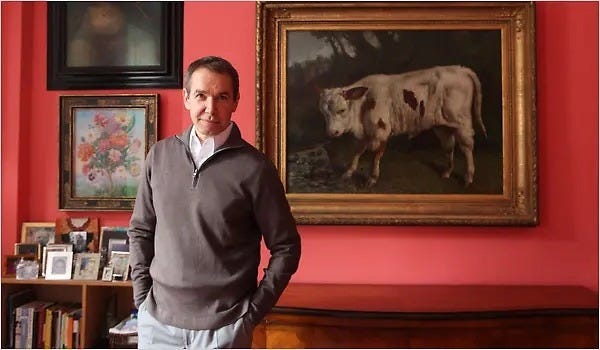Scoop: How Are Artists $upposed to $tay in New York (Part 1)
Our monthly breakdown of a hot art world topic
While the age old tale of rising rent might not sound like the sexiest topic to divulge, I would argue that its omnipresence, especially in a cultural hub like New York, as well as the historical AND forward-looking significance, has more juice to it than one might think. In fact, the concept was handed to me in a recent studio visit, where the artist—who currently has what he considers an ideal studio setup—was lamenting on how long it would be sustainable and curious to know how other artists make it work when life seems to become more expensive by the week.
To explore this topic, we’re going to dive a bit into the recent-ish history of this ongoing conundrum and see where it’s landed us today. In Part 2, we’ll hear from artists who are in the studio rent throes of it all, to better understand the stakes here and see if there is any hope on the horizon for those not yet raking in Jeff Koons money.
The tale of New York City’s modern art world cannot be explained without referencing the evolution of neighborhoods which artists inhabit. There’s a simple equation to break this down:
Artists move into a neighborhood with reasonable rent and spaces befitting a studio
They make said neighborhood cooler and therefore, more appealing with their presence
Galleries want to gleam said appeal so they move into said neighborhood
More commerce = more happening = others start to take note and enter the neighborhood = rents increase
Artists can no longer afford to stay in the area
You can quite literally trace this evolution from the 1960s on—and there was an entire book written about it, which I read as a pre-req for grad school and am now tempted to pick back up. We start in SoHo when the likes of Donald Judd, John Chamberlain, and Gordon Matta-Clark took up shop, and are led to Tribeca, the East Village, Brooklyn, Chelsea, the Lower East Side, to today when a significant epicenter of artists no longer exists.
I omit a silent gasp when an artist mentions their studio resides in one of Manhattan’s neighborhoods, before almost always finding out it’s due to it being a live/work space and/or an subsidized residency. Brooklyn (deep Brooklyn), Queens, and the Bronx are more likely where you will find yourself on studio visits, in what can essentially be seen as a pushing out from what was once the art worlds Manhattan-centric epicenter.
To wrap up Part 1 on a positive note and remind ourselves that continuing to reside in this wild behemoth of a city is well worth it, I leave you with two New York Times articles that shed some optimism on the subject. The first, from earlier this year, that goes inside studio buildings that have remained artist-dominated despite rising rent. And the other, from 2018, highlighting the small but might crew of artists who have remained downtown since the ‘80s. Dream dinner party crew TBH.







